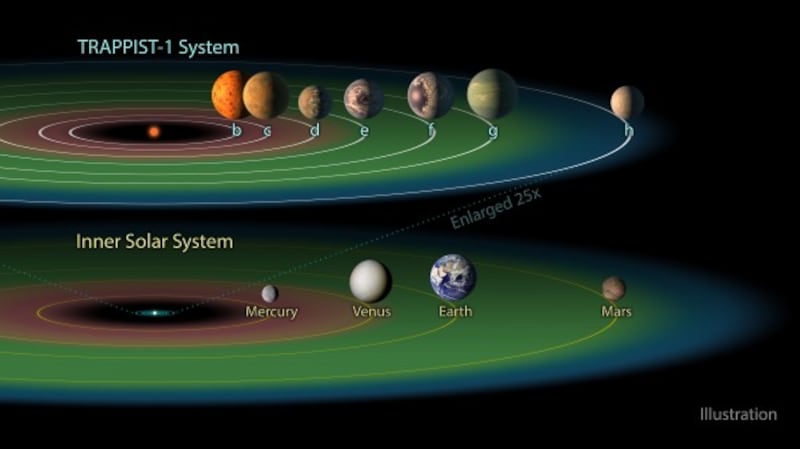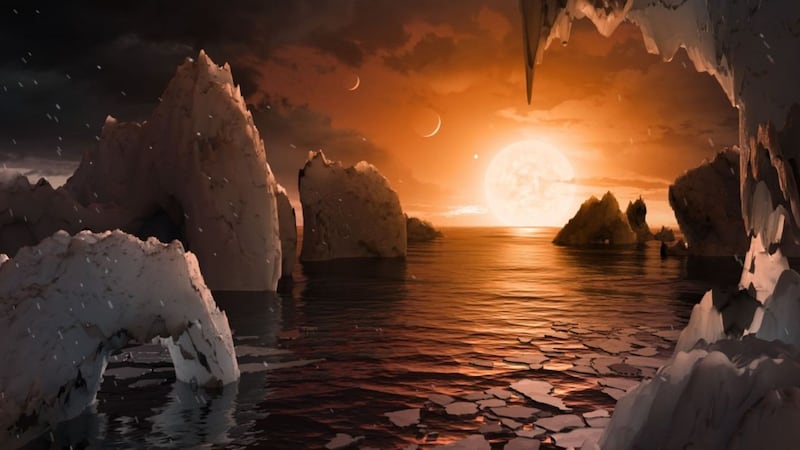In the past few weeks, you’ve probably heard a lot about TRAPPIST-1, a cool dim star 39 light years away that has has seven Earth-sized planets around it.
Now, Nasa has used the Kepler space telescope to capture images of this dwarf star for the first time.
Okay, this may not be much to look at, but the pixelated animation shows the amount of light detected by each pixel in a small section of the camera on board the Kepler.
Animated GIF – Find & Share on GIPHY
In case you were wondering, the flickering you see in the pixels isn’t dips in the brightness of the star but rather a result of the algorithms correcting for Kepler’s small movements in space.
“Kepler detects a change in brightness when a planet passes in front of a star from the vantage point of the telescope,” the space agency said.
“Transiting planets block a tiny fraction of starlight that produces miniscule dips in the brightness of their host star.

“An Earth-size planet passing in front of a small ultra-cool dwarf star like TRAPPIST-1 creates less than a one per cent dip in brightness, and is not visible with the naked eye.”
The Kepler spacecraft observed TRAPPIST-1 for 74 days starting in mid-December last year and the animation is a result of the photos taken once a minute for an hour on February 22.
The image covers an area of 11 square pixels or 44 square arcseconds of the sky – which Nasa says is equivalent in size to “holding up a grain of sand at arm’s length towards the sky”.








